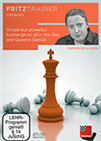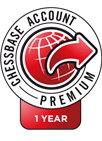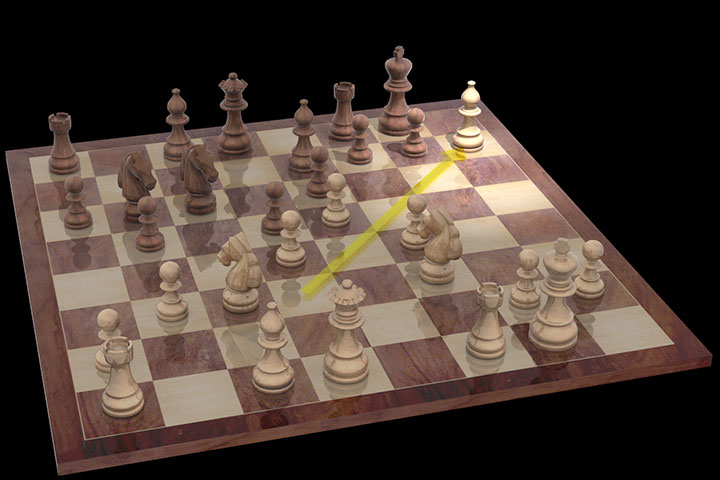Speelman's Agony #91
Many thanks first to everybody who's sent games into the drop box in recent weeks. Two requests though: Please include an email address so that I can contact you. And please use either PGN or a compressed ChessBase database CBV. (In ChessBase, click Menu→Database→Backup database, or hit Ctrl+Z.)
 On this DVD, we will look at a simple-to-learn yet surprisingly effective system that White can play after 1 d4 d5. In all cases White will play 2 c4 - and if given the chance, 3 cxd5!
On this DVD, we will look at a simple-to-learn yet surprisingly effective system that White can play after 1 d4 d5. In all cases White will play 2 c4 - and if given the chance, 3 cxd5!This week's pair of games are by Jan Van den Berg a Dutchman who writes:
I'm from Rotterdam in the Netherlands and only found your articles recently, but always find them very interesting. I have recently turned 40, with two young daughters who are much more interested in playing tennis than chess. My wife, Maria, became concerned that my competitive cycling was taking too much time away from the family so she suggested that I start playing chess again, which I had enjoyed many years ago. She obviously has no idea...
I haven’t played a tournament game for a long time, but the two games I’ve included were both played recently online. Both feature bishop sacrifices to attack the castled king. One of them is excellent, the other is...not.
I am quite proud of the 'ecstasy' game. The sacrifice, which was planned a few moves earlier, was correct and later some tactics all seemed to work for me. The 'agony' game was the opposite. Though the sacrifice was not great, I eventually reached a position where I thought my threats would give me good chances. But my position fell apart after some good tactical finds by my opponent, and with some accurate defence, my fate was sealed. The game finishes with an excellent combination by Black.
Jan annotated both games excellently, mainly using his own ideas but occasionally including some “engine-generated subtleties.” I've left his notes almost completely intact and added a few comments of my own which I've scrupulously marked as by JS.
These were a very enjoyable pair of games to work on and please do keep sending me your own either to the drop box or direct to my email.
We start with the Agony:
Click or tap the second game in the list below the board to switch
This DVD gives you the key to start out with the French Defence. GM Yannick Pelletier is a specialist of this opening, and believes that the most efficient way to understand its ideas, plans, and typical structures is to study classical lines.
Submit your games and win free Premium!
 At the airport, in the hotel or at home on your couch: with the new ChessBase you always have access to the whole ChessBase world: the new ChessBase video library, tactics server, opening training App, the live database with eight million games, Let’s Check and web access to playchess.com
At the airport, in the hotel or at home on your couch: with the new ChessBase you always have access to the whole ChessBase world: the new ChessBase video library, tactics server, opening training App, the live database with eight million games, Let’s Check and web access to playchess.comDid you enjoy the column and instructive analysis by GM Jonathan Speelman? Do you wish you could have a world-renowned grandmaster analysing your play? You can!
To submit your games just upload a PGN or ChessBase file (.pgn or .cbv archive), along with your name and e-mail address. Send one success story (Ecstasy) and one loss (Agony).
Tell why you chose them, where or when they were played. Please do include your email address, so Jon can reply, and preferably a photo of yourself for our article.
If your game is selected Jon will contact you personally, and not only will you get free detailed commentary of your games by one of chess’s great authors and instructors, and former world no. 4 player, but you also win a free three-month ChessBase Premium Account!
A three-month Premium subscription to ChessBase Account means you get:
- Premium access to the Playchess server with ratings, simuls, lectures, and live commentary of top games
- Access to all Web apps with no restrictions, such as the Cloud database, and more!
- Full access to the Video archive, which not only includes all the past lectures by Daniel King, Simon Williams and others, but also a large number of full ChessBase products you would normally need to buy in the ChessBase Shop but that you can view for free as a Premium subscriber.
See also:























